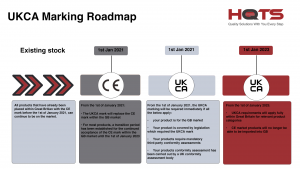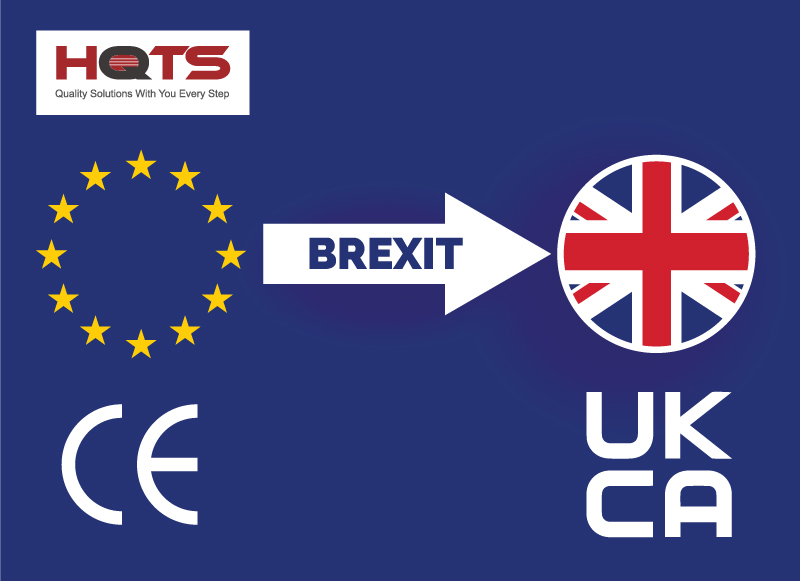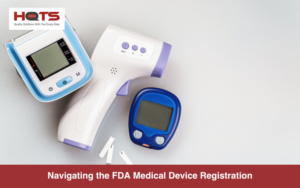With the United Kingdom leaving the European Union, new regulations were put in place to fill the void in which EU legislation has left. One of the major regulatory transitions was the move from the EU’s CE marking – which is a clear indicator that products complied with European product standards – to the newly formed UK Conformity Assessed (UKCA).
The UKCA marking had and still has a big impact on supply chains, and it is crucial for any business partaking in trade with the UK to be aware of the details of the marking. The UKCMA marking is having a big impact on supply chains worldwide and it is crucial for any business that trades with the UK to know the regulations and be aware of the UK CMA testing and certification procedures.
This article will give you a full rundown of the UKCA marking change, discussing its details, how to obtain it, and where it is valid.
What Is the UKCA Mark?

The UK conformity assessed UKCA marking is an image printed on all products within the United Kingdom, including Scotland, Wales, England, and Northern Ireland. This mark replaces the CE marking, which was most commonly used for products known as “new approach” goods.
The UKCA marking is a requirement for all products brought into the country, as it is a benchmark of quality that is mandatory for the country.
When using the UKCA marking for products, it is essential to understand that:
- UKCA markings must be placed on the product by the manufacturer or an authorised representative.
- Placing the UKCA marking makes you responsible for the product’s conformity with the UKCA requirements of the relevant legislation.
- Only use UKCA marking to show conformity with relevant UK legislation.
- Do not use the UKCA marking on products that do not have a requirement to do so.
What Is the Difference Between UKCA and CE?

The UKCA is very similar to the CE marking in Europe. This includes technical requirements and conformity assessments. However, Great Britain has introduced separate guidance and conditions for the products below:
What products have different UKCA marking rules?
Click the links to find out more about these specific product regulations.
When Is the UKCA Marking Required?

The transition from the traditional European CE mark to the new UKCA version came into effect on the 1st of January 2021. However, there is an extension to allow organisations time to switch over their internal processes to the new directive correctly. The timeframe for this can be broken down into:
Transitioning to the UKCA Marking on the 1st of January 2021
By the 1st, the UKCA mark officially replaced the CE mark within the United Kingdom. However, the CE mark will still be accepted until the 1st of January 2023.
As well as this, the UKCA will be required immediately if all of the following criteria are applicable:
- Intended for the UK market.
- Your products are covered in legislation that requires a UKCA mark.
- Any of your goods require a third-party conformity assessment. (this also includes conformity assessment carried out by a UK conformity assessment body).
The UKCA Marking Fully Required on the 1st of January 2023
By 2023, all UKCA requirements will fully apply within Great Britain for the relevant product categories. As well as this, CE-marked products will no longer be able to be imported into the UK without a UKCA mark.
Where is the UKCA Mark Valid?

The UKCA marking is valid within the entirety of the United Kingdom (apart from Northern Ireland, which requires both the CE and UKCA marking). However, it is not valid within Europe. Therefore a CE mark will also be needed on the products if they are being imported to both the United Kingdom and Europe.
What Products Need the UKCA Marking?
The majority of the products covered by CE marking regulations and directives are covered under the UKCA marking. These include products such as:
- Toys
- Recreational craft and personal watercrafts
- Simple pressure vessels
- Non-automatic weighing instruments
- Measuring instruments
- Elevators
- ATEX
- Radio equipment
- Pressure equipment
- Personal protective equipment
- Gas appliances
- Machinery
- Outdoor equipment
- Ecodesign products
- Aerosols
- Low voltage electrical equipment
- Restriction of hazardous substances (ROHS directive)
For more information on which products are required to follow this change, click here.
How to Get the UKCA Mark?
To get the UKCA marking, you’ll need to complete five steps, and we’ll go through these steps below.
1. Decide what directives are relevant to your product
Research which directives are relevant to your product that requires the UKCA marking, then begin to prepare the requirements of these directives.
2. Ensure your product is compliant with the directives through UKCA testing
Once the research is completed, you must perform a UKCA test of your products to ensure they conform to the directive’s requirements. The UKCA test can be completed via lab testing, or the risk assessment checks relevant to the product.
3. Create and constantly update a technical file that is in line with the requirements of the directive
As well as UKCA testing process also requires a technical file to be created which records the general details of the product, including:
- How the product is designed and manufactured.
- How the product has been shown to conform to the relevant requirements.
- The addresses of the manufacturer and any storage facilities.
These records must be kept for at least ten years. This means that they must not only be maintained but updated as needed.
4. Write and sign a UKCA Declaration of Conformity to be held with the original technical file
As well as a technical file, a UKCA Declaration of Conformity must be created and signed to go alongside the technical file and the application. This document must include:
- Your name and complete business address or that of your authorised representative.
- The product’s serial number, model, or type identification.
- A statement, stating you take full responsibility for the product’s compliance.
- The details of the approved body which carried out the conformity assessment procedure (if applicable).
- The relevant legislation with which the product complies.
- Your name and signature.
- The date the declaration was issued.
5. Apply for the UKCA marking following the requirements of the directives
After creating the documentation and performing the required UKCA test, you can submit your UKCA marking application according to the product directives.
Can I Self-Certify UKCA?
Yes, UKCA self-certification is possible. However, this only applies to specific situations. To find out more about these situations, click here.
Can I Use CE and UKCA Marks at the Same Time?
Yes, it is possible to have both CE and UKCA markings at the same time. This is especially true if you plan to send your products to both Europe and the United Kingdom.
Conclusion: All You Need to Know About UKCA Marking and Ukca Testing in 2022
The UKCA mark is a new product marking requirement for products placed on the UK market. It applies to all products covered by CE marking regulations and directives. But going through the whole UKCA marking process alone can be a tough process. At HQTS we have over 25 years of experience in industry-leading quality control for various industries, including product testing. To learn more about how we can help you with UKCA marking testing, contact us today.





